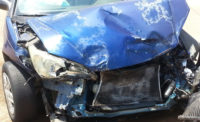Older workers (those ages 55 and older) bring extensive skills, knowledge, and experience built over the course of a lifespan. On the flip side, their driving may be affected by age-related physical and mental changes – many of them perfectly normal changes.
Employers cannot avoid the issue of aging drivers because by the year 2020:
- 25% of workers will be 55 years or older1
- 30% of Americans will be 55 years or older2
- 40 million licensed drivers will be 65 years or older3
Research shows that older drivers are more likely than their younger counterparts to adopt safe behaviors such as wearing a seat belt and complying with speed limits. However, those age 55 and older have twice the risk of dying in a work-related crash than younger workers do.4
Motor vehicle crashes account for 32% of all work-related deaths among workers age 55 or older.5
How can you prevent crashes among older drivers at work?
Employers:
- Consider whether the work can be done without driving. Reducing the amount of driving workers do is the most effective way to prevent motor vehicle crashes.
- Set policies that allow drivers to consult with their supervisors to adjust driving hours if they have trouble seeing at night, and to stop driving if they are too tired or the weather is bad.
- Provide “refresher” driving training that includes topics such as safe-driving strategies, changes in road rules, regulations on distracted driving, and new vehicle safety features.
- Restrict driving based on assessment of actual driving ability, rather than general health status or an arbitrary age limit.
- Give workers general information about the possible effects of prescription and over-the-counter medications on their driving.
Workers:
- Talk with your doctor or pharmacist about potential effects of your medications on safe driving.
- Get a thorough eye exam at least every 1-2 years, as your vision may change with age.
- Maintain good health by engaging in regular physical activity, eating a healthy diet, getting enough sleep, and complying with all health exams and screenings.
- Use a driving self-assessment tool to evaluate your driving.
- Talk with your supervisor if you are having difficulty with driving, as you may need to change your driving habits.
Sources
1 Tossi, M. (2012) Employment outlook: 2010-2020. Labor force projections to 2020: a more slowly growing workforce. Monthly Labor Review, January 2013, 43-64.
2 U.S. Census Bureau, Population Division (2014) Table 9. Projections of the Population by Sex and Age for the United States: 2015 to 2060Cdc-excelExternal(NP2014-T9).
3 Dellinger AM, Langlois JA, Li G. Fatal crashes among older drivers: decomposition of rates into contributing factors. Am J Epidemiol 2002;155(3):234–41.
4 Based on 2011-2013 data from the Bureau of Labor Statistics Census of Fatal Occupational InjuriesExternal query system and 2011-2013 Employed Labor Force (ELF) population data.
52011-2013 data from the Bureau of Labor Statistics Census of Fatal Occupational Injuries query systemExternal.






